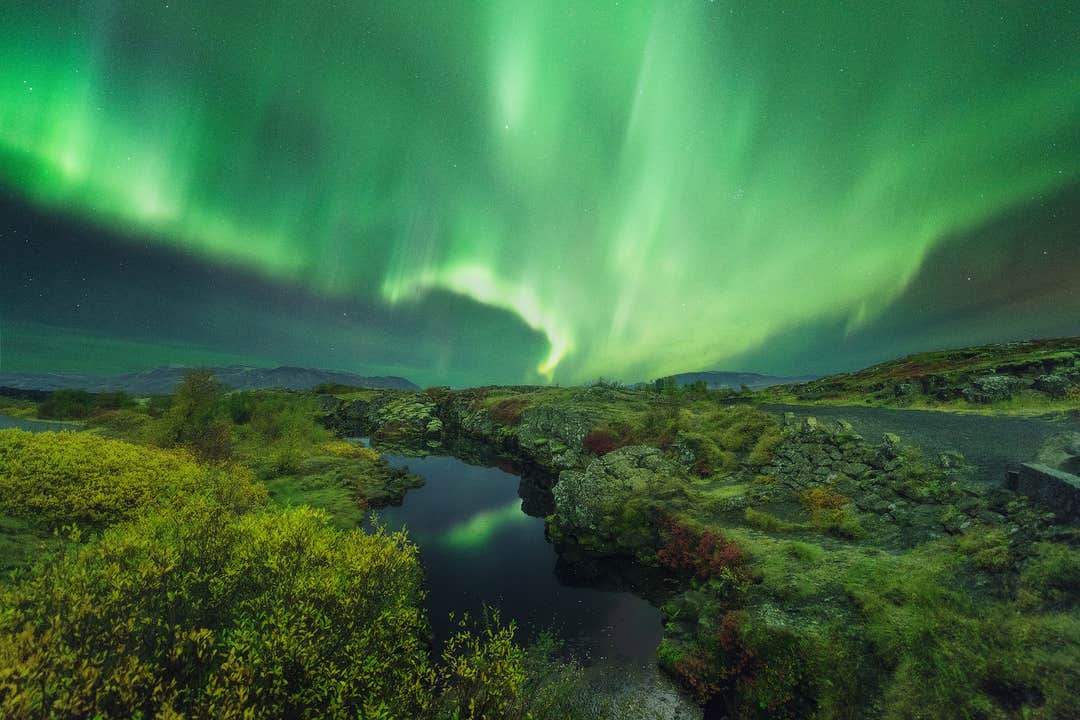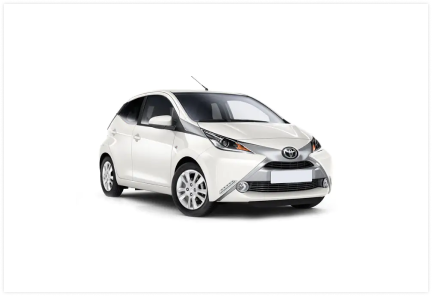4-дневный зимний автотур с северным сиянием по Золотому кольцу, ледникам и пляжам с черным песком





Включено
Направления
Карта
Достопримечательности
Развлечения
Детали поездки
Выбирайте из лучших компаний по прокату автомобилей в Исландии
Выберите поездку уже сейчас; вы сможете уточнить время и детали поездки по мере ее приближения.

Компактный автомобиль

Средний автомобиль

Премиум автомобиль

large car

SUV
Персонализация маршрута
День 1 — Рейкьявик
- Рейкьявик - День прибытия
- Больше
- Рейкьявик
- Церковь Хатльгримскиркья
- Улица Лейгавегюр
- Скульптура «Солнечный странник»
- Концертный зал Харпа
- Старая гавань
- Пруд Тьё́днин
- Больше
Когда вы прилетите в страну, ваш автомобиль будет ждать вас в международном аэропорту Кефлавик. После того, как вы получите ключи от него, отправляйтесь в Рейкьявик, где вы проведете ночь.
По пути вы проедете через темное лавовое поле полуострова Рейкьянес. Посреди иссиня-черной лавы располагается всемирно известный спа-курорт Голубая лагуна. Если вы не торопитесь прогуляться по городу, то можете остановиться там, чтобы расслабиться в теплых лазурных водах в окружении внушительного лунного пейзажа полуострова.
Когда вы приедете в Рейкьявик, располагайтесь в отеле и отправляйтесь исследовать город. Здесь вы найдете множество ресторанов, кафе и баров. Узнайте традиционные вкусы страны, попробовав местные блюда, например вяленую рыбы «harðfiskur», копченую баранину «hangikjöt» или местный молочный продукт «skyr».
Размещение в день 1
Опыт дня 1
День 2 — юго-западная Исландия
- юго-западная Исландия
- Больше
- Национальный парк Тингведлир
- Лейгарватн
- Водопад Брюарфосс
- Геотермальная зона Гейсир
- Водопад Гюдльфосс
- Флудир
- Кратер Керид
- Больше
Сегодня вы покинете город и отправитесь в путешествие. Если вы хотите интересно начать день, то можете совершить короткую поездку на конную ферму, где познакомитесь и покатаетесь на дружелюбных исландских лошадках. Эти животные одновременно нежны и умны, поэтому экскурсия подойдет как начинающим, так и опытным наездникам.
Начните свое знакомство с достопримечательностями, прокатившись по Золотому кольцу. Первая остановка — Национальный парк Тингведлир, родина исландского парламента. Викинги собирались здесь, чтобы решать свои споры и писать законы страны, что и привело к созданию в 930 году н.э. старейшего в мире действующего исландского парламента Альтинг.
Тингведлир является не только историческим сокровищем, но и геологическим чудом, поскольку он расположен не на Северо-Американской или Европейской тектонической плите, а в долине между ними. Когда плиты движутся, они разламывают землю, создавая огромные трещины в окружающем ландшафте.
Одна из этих трещин называется Пенингагьяу или «монетное ущелье», так как люди бросают в нее монеты на удачу. Самая же известная расщелина называется Сильфра. Кристально чистые воды Сильфры сделали это место популярным для любителей снорклинга, и сегодня у вас будет возможность принять участие в туре со снорклингом, где вы проплывете по ледниковой воде, заполняющей разлом.
Продолжая путешествие, вы отправитесь в геотермальную зону Гейсир. Эта местность полна пузырящихся грязевых бассейнов необычных цветов, шипящих фумарол, горячих источников и извергающихся гейзеров! Самым активным гейзером является Строккур, который выбрасывает струю воды вверх каждые 5-10 минут, достигая 20-метровой высоты.
Последняя часть Золотого кольца — это грохочущий водопад Гюдльфосс. Здесь мощь и красота объединяются в единое целое, ведь этот двухступенчатый водопад падает с 32-метровой высоты в древний каньон. Приезжая сюда зимой, вы увидите окрестности, покрытые льдом и кажущиеся застывшими в страхе от бущующей воды.
Если вы ищете немного экстрима, то сегодня вы можете отправиться на экскурсию от водопада Гюдльфосс до ледника Лаунгйёкюдль, где вы промчитесь на снегоходе по белым, заснеженным холмам, наполняя горным воздухом ваши легкие, а все тело — адреналином.
В конце дня отправляйтесь в город Хвольсвёдлюр, где вас ожидает ночлег. Если небо чистое и безоблачное, то перед сном вы сможете отправиться на поиски прекрасного северного сияния.
Размещение в день 2
Опыт дня 2
День 3 — Рейкьявик
- Рейкьявик
- Больше
- Вик
- Церковь Вик-и-Мирдал
- Пляж с черным песком Рейнисфьяра
- Морские скалы Рейнисдрангар
- Дирхолаэй
- Водопад Квернюфосс
- Водопад Скоугафосс
- Водопад Гльюврабуи
- Водопад Сельяландсфосс
- Рейкьявик
- Больше
Сегодня вы познакомитесь с чудесами южного побережья Исландии. Ваш день будет наполнен ледниками, водопадами, черным песком, захватывающими видами на океан и, конечно же, приключениями.
Для начала отправляйтесь на восток, к первой точке на маршруте – великолепному водопаду Сельяландсфосс. Зимой в Исландии дни достаточно темные, и если вы отправитесь рано, то солнце может не успеть взойти. Но не беспокойтесь, зимой Сельяландсфосс освещается ярким светом, создающим весьма таинственную атмосферу вокруг.
Отсюда вы двинетесь к другому, столь же впечатляющему водопаду Скоугафосс. Имея в ширину 25 метров, он намного шире, чем Сельяландсфосс, и имеет более классическую форму, спадая вниз по скалам с 60-метровой высоты. Если солнце уже взошло, вы сможете увидеть одну или даже две радуги, образующиеся в тумане каскада.
Находять в пути между этими двумя водопадами, на севере вы сможете увидеть ледниковый вулкан Эйьяфьядлайёкюдль. Затем покажется могучий ледник Мирдальсйёкюдль. Вы можете сделать остановку у выводного ледника Соульхеймайёкюдль, относящегося к Мирдальсйёкюдль, где вашему взору откроются уникальные ландшафты, созданные ледниковой эрозией и извержениями вулканов.
На Соульхеймайёкюдль у вас есть возможность выбрать один из двух туров, чтобы лучше изучить ледник. Отправляясь в пеший поход, вы исследуете массивную ледяную шапку ледника, а опытный гид проведет вас через глубокие трещины и вершины, покрытые пеплом. Или же вы можете отправиться в путешествие на снегоходах, если пропустили это накануне.
Рядом находится деревня Вик. Это отличное место, где можно отдохнуть перед вашим возвращением в Рейкьявик. Вик находится на берегу черного песчаного пляжа Рейнисфьяра, известного своими необычайно красивыми пейзажами и коварными волнами. Вокруг пляжа возвышаются скалы из колонн, которые образуют странные геометрические узоры, а из океана встают массивные морские глыбы Рейнисдрангар.
Поскольку это автотур, вы сами решаете, какое из этих удивительных мест вы посетите в первую очередь. Также вариарт отлично начать день — прямо с утра отправиться в деревню Вик, чтобы присоединиться к экскурсии в настоящую ледяную пещеру на леднике Мирдальсйёкюдль. После этого отправляйтесь обратно в Рейкьявик, сделав остановки у вышеупомянутых завораживающих достопримечательностей.
Размещение в день 3
Опыт дня 3
День 4 — Рейкьявик
- Рейкьявик - День отправления
- Больше
- Крисювик
- Бассейн из лавового камня Бримкетидль
- Гюннухвер
- Скальное побережье Валахнукамёль
- Маяк Рейкьянесвити
- Мост между континентами
- Морские утёсы Hafnarberg
- Больше
Проведите день, знакомясь с Рейкьявиком, прежде чем отправиться в аэропорт. Но убедитесь, что в Кефлавике у вас будет достаточно времени, чтобы вернуть автомобиль и зарегистрироваться на рейс.
Если вы жаждете увидеть больше достопримечательностей, посетите такие архитектурные шедевры, как церковь Хатльгримскиркья и концертный зал Харпа, полюбуйтесь историческим зданием парламента и посетите Мэрию, чтобы посмотреть на трехмерный макет Исландии и попробовать найти все места, где вы побывали за последние дни.
Вы также можете сходить в несколько городских музеев. Посетите Национальный музей, чтобы узнать об истории Исландии, начиная с эпохи заселения и до наших дней, или музей под открытым небом Аурбайр, где располагаются древние исландские дома, познакомящие вас с повседневной жизнью исландцев в период до индустриализации.
По всему городу и окрестностям разбросано множество специализированных музеев, посвященных китам, естествознанию, ледникам и даже панк-музыке.
Когда придет время уезжать, вы снова поедете через лавовые, лунные поля полуострова Рейкьянес в международный аэропорт Кефлавик.
Хорошего полета, и мы очень надеемся увидеть вас снова!
Опыт дня 4
Как это работает
Забронируйте тур в ведущем агентстве Исландии — мгновенное подтверждение, лучшая цена и поддержка 24/7.
Забронируйте место
Получите мгновенное подтверждение
Персонализируйте маршрут
Пользуйтесь советами экспертов
Доступ к VIP-клубу
Путешествуйте с уверенностью
Что взять с собой
Полезная информация
Обратите внимание, что ваш маршрут может быть скорректирован в зависимости от даты и времени прибытия, чтобы обеспечить максимально комфортное начало путешествия.
Самостоятельные туры по Исландии начинаются либо в Рейкьявике, либо в международном аэропорту Кеблавик. Для вождения необходимы действующие водительские права и как минимум один год опыта вождения. Если вы арендуете автомобиль типа Toyota Aygo или аналогичный, имейте в виду, что защита от гравия в стоимость не входит — при необходимости уточните у нас доступные варианты страхового покрытия.
Завтрак может не предоставляться в некоторых хостелах и гостевых домах, но благодаря гибкому формату самостоятельного путешествия у вас будет возможность открывать для себя аутентичные рестораны по пути.
Некоторые дополнительные активности, например, снегоходные туры, могут потребовать наличия водительских прав или предоставления дополнительной информации вашему тур-оператору. Для сноркелинга или дайвинга потребуется медицинская справка, умение плавать и уверенность в воде.
Северное сияние — природное явление, и его нельзя гарантировать. Тем не менее маршрут тура спланирован так, чтобы максимально повысить ваши шансы на его наблюдение при подходящих погодных условиях.
Иногда мероприятие может быть отменено из-за экстремальной погоды. В таких случаях мы постараемся перенести активность или предложить альтернативу. Любая разница в цене будет возвращена.
Обратите внимание, что ледяные пещеры в леднике Ватнайёкюдль обычно открыты только с октября по апрель — отличная возможность исследовать их в зимние месяцы.
Этот самостоятельный тур проходит зимой, когда погодные условия в Исландии могут значительно варьироваться. Снег и лёд — обычное явление, а световой день ограничен. Мы рекомендуем взять обувь с противоскользящей подошвой или приобрести специальные накладки с шипами — их легко найти в супермаркетах и на автозаправках по всей стране.
Видео
Гарантируем
Безопасное путешествие с учётом ваших пожеланий по честной цене. Без сюрпризов и стресса.
Проверенные отзывы
Похожие турпакеты

Загрузите приложение крупнейшего туристического портала Исландии на свой телефон, чтобы управлять всей поездкой в одном месте.
Отсканируйте этот QR-код с помощью камеры телефона и нажмите на появившуюся ссылку, чтобы всегда иметь доступ к крупнейшему туристическому порталу Исландии в своем кармане. Введите свой номер телефона или адрес электронной почты, чтобы получить SMS или электронное письмо со ссылкой на скачивание.







